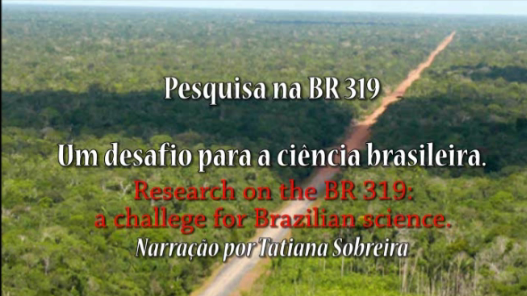Languages
CENBAM

The Importance of Amazonian Biodiversity
The Amazon plays a central role in global biodiversity, as well as being a critical part of the planet's carbon and water cycles, which impact other regions, including Brazil's major agricultural areas. However, biodiversity research in the Amazon remains limited, fragmented, and lacking the influence on public policy that its immense importance warrants. Investment in Amazon science has been restricted, with taxes paid in the Amazon region historically subsidizing research in southeastern Brazil.
Lack of Researchers and Infrastructure
The problem is not solely one of insufficient funding. There are also too few researchers based in the Amazon to utilize the available resources. This creates a vicious cycle - the lack of infrastructure leads to a dearth of qualified scientists, which in turn contributes to low research productivity.
The INCT-CENBAM Network
INCT-CENBAM coordinates a network of institutions, both within and beyond the Amazon, all focused on biodiversity studies. The structure of this network differs innovatively from existing models, as explained below. The term "biodiversity" used here follows the guidelines of Brazil's National Biodiversity Policy (Decree No. 4,339 of 22/08/2002), which defines the government's official position on the relevant domains. CENBAM's goal is to create and consolidate production chains grounded in sound scientific knowledge, originating from biodiversity research and culminating in valuable information, products or processes for specific short, medium and long-term users.
Integrating Biodiversity Research
CENBAM's primary objective is to integrate Amazon biodiversity research into efficient, productive scientific-technological chains. This is crucial because, currently, Amazon biodiversity is neither being conserved nor utilized effectively due to the lack of scientific and technological knowledge. The limited research conducted has been concentrated around major population centers like Belém and Manaus. More remote, regional hubs face a vicious cycle of resource scarcity, leading to a lack of long-term research projects and qualified scientists, which then perpetuates low productivity and difficulty in securing funding for local capacity building. The video "Amazonas faz ciência" provides an overview of the work and initiatives of this important research center focused on the Amazon's biodiversity.
Challenges of Remote Amazon Research
If you watch the video below you’ll see that conducting biodiversity surveys and research in remote Amazon locations presents immense challenges. It requires tremendous effort and dedication from teams working to document the astounding diversity and ecological richness of these previously little-known regions. Successful research in the Amazon's least explored areas depends on collaborative efforts between researchers, institutes, local communities, and government agencies. Its immensely hard work, but it’s worth it - but we want to make it more efficient.
INCT-CENBAM's Approach
Maximizing Impact
As a result, the researchers and students involved in INCT-CENBAM activities are able to generate maximum value from the societal resources invested in maintaining its research infrastructure and promoting Amazon biodiversity conservation.



